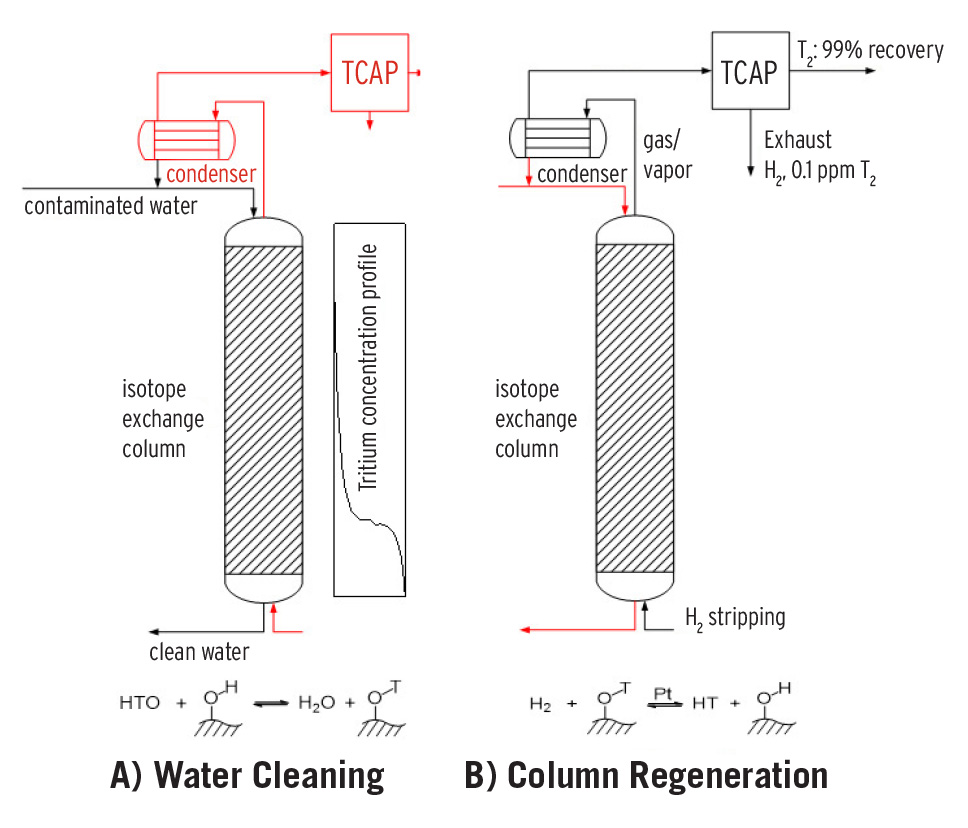Tech Briefs
Savannah River National Laboratory
Decontamination of Tritiated Water
Technology Overview
Savannah River National Laboratory (SRNL) has developed a method to separate tritium from aqueous stream at ambient conditions. In this three-step water detritiation process, tritium is first absorbed in a column with hydrophilic separation phase. Then the absorbed tritium is catalytically exchanged with gaseous hydrogen stream, followed by the separation of tritium gas from hydrogen.

Benefits
- Increased efficiency
- Scalable
- Cost savings
Applications
- Environmental remediation
- Water detritiation
- Nuclear power industry
Description
Efficient and economical water detritiation is very challenging for large quantities of tritiumcontaminated water since tritium is part of the water molecule and exhibits almost identical chemical and physical properties as its non-radioactive counterpart. Existing methods are energy intensive, require large footprints, and the current capacity is orders of magnitudes smaller than needed. This new technology does not require water distillation or electrolysis. In addition, system is easy to scale up to both desired throughput or decontamination factor. Bench scale experiments demonstrated H/D and H/T separation. An 18-foot tall H/D pilot plant has been constructed to collect engineering data. In addition to H/D/T separation, separation of 16O/17O/18O was also observed.
Intellectual Property
This technology and methods for its use have been granted US Patent No. 10,381,121 B2 (August 13, 2019) and Japanese patent 6486992 (March 1, 2019) “Decontamination of Tritiated Water.” This technology and related methods are available for licensing.
Partnering Opportunities
SRNL invites interested companies with proven capabilities in this area of expertise to develop commercial applications for this process under a cooperative research and development agreement (CRADA) or licensing agreement. Interested companies will be requested to submit a business plan setting forth company qualifications, strategies, activities, and milestones for commercializing this invention. Qualifications should include past experience at bringing similar products to market, reasonable schedule for product launch, sufficient manufacturing capacity, established distribution networks, and evidence of sufficient financial resources for product development and launch.
Download Tech Brief
Contact Information
Savannah River National Laboratory
E-mail: partnerships@srnl.doe.gov